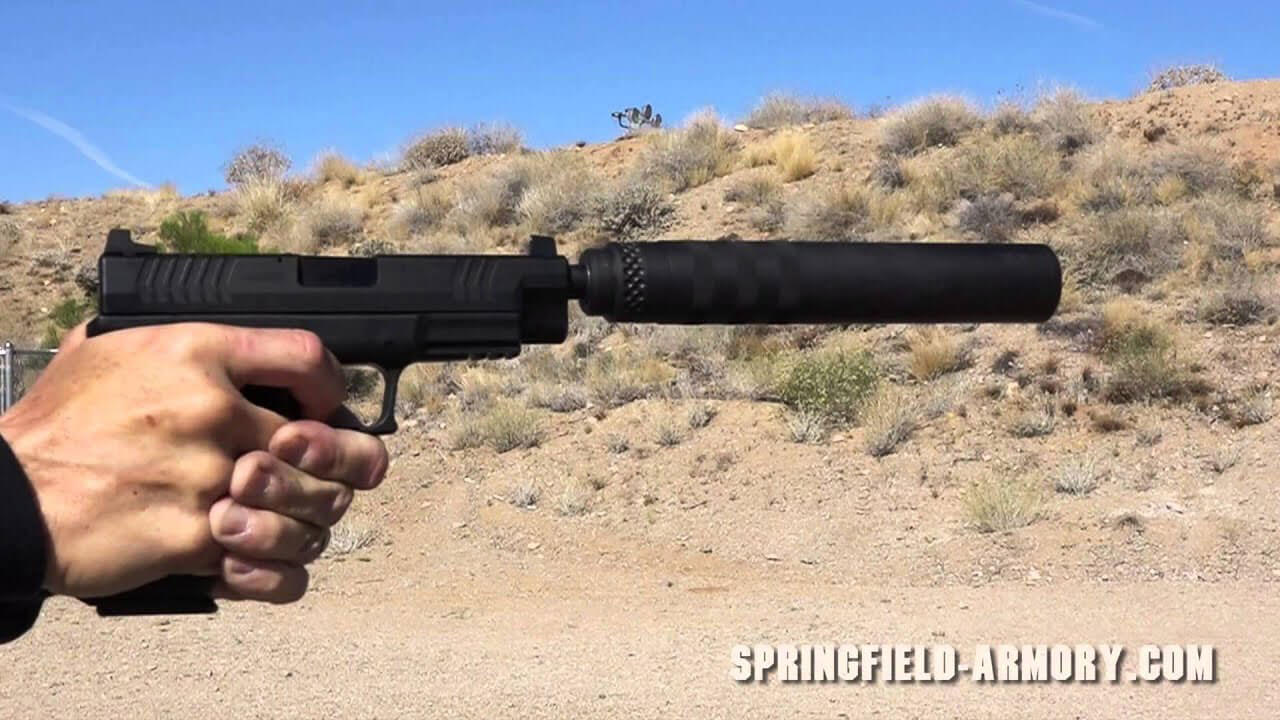When we press the trigger the gun fires and a chain of events is set into motion.
The fired round produces hot and pressurized gases that force the bullet down the barrel.
The end result of this gas pinball action is a quieter shot with reduced recoil.

Contrary to popular belief, suppressors do not completely eliminate the sound of a weapon being fired.
Some do an exceptional job but they are in no way truly silencers.
The funny thing about that is that the ATF in the NFA division actually list suppressors as silencers.
Suppressors are also commonly referred to as cans because of their design.
The ultimate goal of a suppressor is to make the weapon hearing safe.
This means the sound is controlled and diminished to the point that hearing protection is not required.
In some guns this is easy and made easier by the use of subsonic ammunition.
The perks of running a suppressor are many, but protecting your hearing is by far the most critical.
This is especially true for shooters that put a lot of rounds down range each year.
There is a cumulative effect and in time without superior hearing protection you will begin to notice the effects.
Suppressors help to reduce and even eliminate that problem.
Another benefit is a reduction in muzzle rise.
This allows us to stay on target and in turn shoot faster.
One last positive aspect of suppressors is their ability to diminish muzzle flash.
This is very important to military and law enforcement that use night vision.
There are essentially three types of suppressors that we have access to.
First is the thread on can.
These devices attach to the threaded portion of your rifle or pistol barrel.
Our second can is the quick detach or QD can.
These devices are sold with a host muzzle gear that is attached to the rifle.
These are popular because they allow us to more quickly move our can from one gun to another.
The last jot down are integral suppressors.
These are devices that are incorporated into the actual barrel of the gun.
To the naked eye, these guns simply appear to have just a slightly thicker barrel.
A great example of this is an integrally suppressed .22LR bolt rifle with a port.
When using subsonic ammunition this gun is as close to silent as a suppressor can get.
The downside to suppressors is that they fall under the National Firearms Act or NFA.
Once approved you literally will get a stamp.
It looks like a fancy postage stamp and is your golden ticket to owning your suppressor.
you gotta go through this process for each can you purchase and many people have become stamp collectors.
Even with it being a pain in the caboose, owning a suppressor is a great idea.
Once again, I will mention hearing protection as one of the major benefits.
Overall, the benefits of having a suppressor far outweigh the downsides.
More companies are making them and prices have dropped dramatically over the years.
If you have been considering going quiet, I encourage you to make the jump.
The quicker you do the paperwork, the faster you will get your can!




